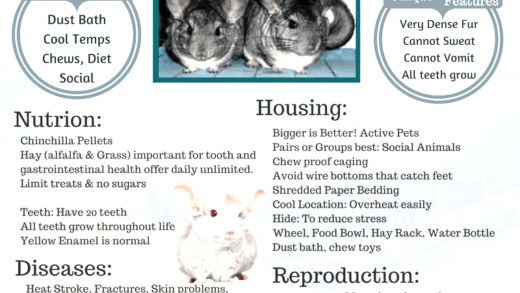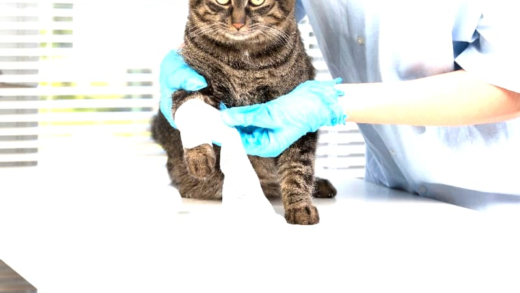This article covers essential cat care, including signs of injury or illness, basic first aid tips, engaging toys for entertainment, and understanding your cat’s emotional state. It emphasizes the importance of a safe environment, regular vet visits, and attentive observation of behavior to ensure a happy and healthy feline friend.
Basic Needs of a Cat
Cat care essentials start with understanding what every cat needs to thrive. First and foremost, a safe and clean environment is crucial. Cats are naturally curious creatures, and they need space to explore without dangers lurking around. This includes securing windows, removing toxic plants, and ensuring there are no small objects they could swallow.
Next, providing a cozy resting area is vital. Cats love their comfort, so a soft bed in a quiet corner is perfect. Also, they appreciate vertical space, so consider cat trees or shelves for climbing and perching.
Social interaction is another basic need. While some cats are more independent, they all benefit from playtime and affection. Regular play sessions not only keep them fit but also strengthen your bond. Lastly, regular veterinary care is essential to monitor their health and catch any issues early.
Creating a Cozy Space
Creating a comfortable space for a cat is more than just providing food and water. Start by choosing the right location for essentials like litter boxes and food dishes. Cats prefer these areas to be separate and in quiet, low-traffic spots.
Next, consider their sensory needs. Cats are sensitive to smells, sounds, and sights. Using calming pheromone diffusers can help create a peaceful environment. Additionally, providing hiding spots, like boxes or cat tunnels, can make them feel secure.
Also, think about temperature. Cats love warmth, so a sunny windowsill or a heated pad can be their favorite spots. Don’t forget about toys—interactive toys can keep them engaged and prevent boredom. Overall, a cozy space is about understanding your cat’s preferences and creating an environment where they feel safe and happy.
Balanced Diet for Cats
The best food for a balanced cat diet is vital for their overall health. Start by choosing high-quality cat food that lists meat as the first ingredient. Cats are obligate carnivores, meaning they need animal protein to thrive. Look for options that contain essential nutrients like taurine, which supports heart health.
Wet food is often recommended for hydration, while dry kibble can help with dental health. Always consult with your vet to determine the right portion sizes based on your cat’s age, weight, and activity level. Additionally, consider their individual preferences—some cats may be picky eaters, so experimenting with different flavors and textures can help.
Lastly, avoid feeding your cat human food, especially toxic items like chocolate or onions. A balanced diet ensures your cat stays active and healthy, reducing the risk of obesity and related health issues.
Vet Visits: How Often?
Regular vet visits are essential for cat care essentials. Knowing how often to take your cat to the vet helps maintain their health. Generally, adult cats should see the vet at least once a year for a routine check-up. This visit allows for vaccinations, parasite control, and early detection of potential health issues.
Kittens require more frequent visits, typically every 3 to 4 weeks until they are around 16 weeks old. This schedule ensures they receive their necessary vaccinations and are monitored for growth and development.
For senior cats, vet visits should occur at least twice a year. As cats age, they become more susceptible to health problems like kidney disease or hyperthyroidism. Regular check-ups help catch these issues early, making treatment more manageable.
- 1-2 years: Annual check-ups.
- Kittens: Every 3-4 weeks until 16 weeks old.
- Senior cats: Twice a year.
Overall, establishing a vet visit routine is crucial for your cat’s long-term well-being.
Common Behavior Issues
Understanding common cat behavior issues is vital for creating a happy home. Cats can display various behaviors that may seem puzzling at times. For instance, excessive scratching or biting can indicate stress or boredom. Providing scratching posts and interactive toys can alleviate these issues.
Another common behavior is litter box avoidance. If your cat refuses to use the litter box, it may be due to a dirty box or a dislike for the litter type. Regular cleaning and experimenting with different litter can resolve this problem.
Additionally, excessive meowing can be a sign of loneliness or discomfort. Spending more time with your cat or providing stimulating toys can help reduce this behavior. Remember, each cat is unique, so observing and understanding their specific needs is key.
- Scratching: Provide scratching posts.
- Litter box issues: Clean regularly and try different litters.
- Excessive meowing: Increase playtime and engagement.
Addressing these issues early can lead to a happier cat and a more harmonious home.
Litter Box Training
Litter box training is one of the essential cat care essentials. It’s often easier than you might think. Start by placing the litter box in a quiet, accessible location. Cats prefer privacy, so avoid high-traffic areas.
Using the right type of litter is crucial. Most cats prefer clumping litter, as it mimics natural soil. Once you’ve set up the box, introduce your cat to it immediately after bringing them home or after meals. Cats typically have a natural instinct to dig and bury, so they will likely use it.
If your cat has accidents outside the box, don’t punish them. Instead, clean the area thoroughly to eliminate odors and encourage them to use the litter box in the future. You can also try placing them in the box after meals or when you notice them looking for a place to go.
- Choose a quiet location for the box.
- Use clumping litter for better acceptance.
- Introduce the box immediately after meals.
With patience and consistency, litter box training can be a smooth process.
Signs of Injury or Illness
Recognizing signs of injury or illness in your cat is crucial for their well-being. Early detection can lead to quicker treatment and a better outcome. Common indicators include changes in appetite, behavior, or litter box habits. For instance, if your cat suddenly stops eating or drinking, it may signal a health issue. Additionally, watch for lethargy or hiding, as these can be signs of discomfort.
Other symptoms to look for include:
- Vomiting or diarrhea
- Excessive grooming or hair loss
- Difficulty breathing
- Visible injuries, like cuts or swelling
When you notice any of these signs, it’s best to consult your vet immediately. Cats are masters at hiding pain, so being attentive to their behavior is essential.
Handling Injuries at Home
Knowing how to handle common cat injuries at home can be invaluable. Minor cuts or scrapes can often be treated with basic first aid. Start by gently cleaning the wound with warm water and mild soap. Avoid using hydrogen peroxide, as it can irritate the tissue.
For bleeding, apply gentle pressure with a clean cloth until it stops. If the wound is deep or doesn’t stop bleeding, contact your vet. Remember to keep an eye on the wound for signs of infection, such as redness or swelling.
Additionally, have a basic first aid kit for your cat that includes:
- Adhesive bandages
- Gauze and tape
- Antiseptic wipes
- Scissors
Always consult your vet for any serious injuries or if you’re unsure about treatment. Being prepared can make all the difference in an emergency.
Best Toys for Cats
Keeping your cat entertained and active is essential for their mental and physical health. The best toys for cats stimulate their natural hunting instincts and provide exercise. Consider interactive toys that engage their senses, like feather wands or laser pointers.
Another great option is puzzle feeders that challenge your cat while rewarding them with treats. This not only keeps them busy but also prevents boredom-related issues. Don’t forget about classic toys like balls, mice, and crinkle toys, which many cats love to bat around.
When selecting toys, look for safety features, avoiding small parts that could be swallowed. Rotate toys regularly to keep your cat interested and engaged. A happy cat is an active cat, so investing in quality playtime is a win-win!
Happy or Stressed?
Understanding how to read your cat’s emotions is vital for their overall happiness. Signs of a happy cat include a relaxed body posture, purring, and slow blinking. They may also knead with their paws, showing contentment. On the other hand, a stressed cat may display behaviors like hiding, excessive grooming, or aggression.
To help your cat feel secure, create a safe space with their favorite toys and a cozy bed. Additionally, maintaining a consistent routine can reduce stress levels. If you notice persistent signs of stress, consult your vet for advice and potential solutions.
Being in tune with your cat’s emotions allows you to provide a better environment and strengthen your bond.





Comments are closed.